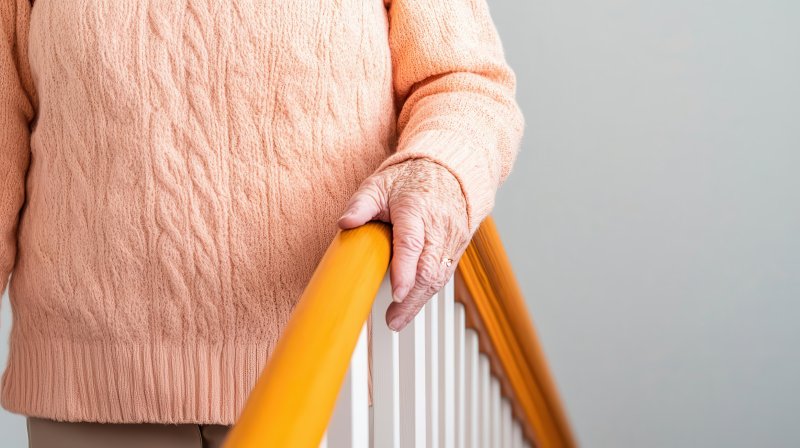Balance is everything — especially as we age
So, is it ever OK to mock a sweet, elderly woman, helplessly lying on the floor with what might be a broken hip, her voice seeking assistance and cracking with worry and pain?
Well, about 35 years ago the answer apparently was – “Sure!” We felt it was fine to frequently mimic that woman, repeating her plea, “Help; I’ve fallen and I can’t get up!”
The ad probably deserved mockery, but it may not seem so funny today. For a variety of reasons, we are more likely to fall as we age — and falls have more severe consequences for older body parts. Experts stress that we should remind ourselves about those risks regularly (that isn’t funny), and act to avoid them.
Among older adults, falls caused by decreased balance and mobility are the leading cause of injury and disability, according to John Tyson, a surgeon at Beebe Healthcare.
“For individuals 65 and older in the U.S., research shows an estimated 36 million falls occur every year. In the operating room, we treat numerous injuries that are caused by falls at home or in public,” he said.
In fact, about one out of four people in emergency rooms has suffered a fall, and about one-quarter of older adults — who tumble the most — fall once each year, according to the Centers for Disease Control. About 320,000 hip fractures occur annually from falls, often leading to diminished mobility and declining health.
The number of falls among older people has grown significantly, maybe because we are living longer, or maybe because we are doing riskier (stupider?) things at an older age.
Tyson, in a column about the topic where he promotes the Beebe Fall Prevention Task Force and its success at reducing falls, said we can mitigate risks in advance with good lighting, less clutter, non-slip rugs and footwear, and grab bars and handrails.
Many falls occur because of pets, cords and rugs — and on stairs, uneven surfaces and ice. So, if you sense that you might be unsteady or at risk, stop moving. Pause, take some time and think about a safe approach. Experts say people who have fallen often report they saw the danger in advance.
Sarah Schneider, a physical therapist in Rehoboth who is transitioning to a position at Aquacare in late September, said balance is key. She plans to offer free fall prevention workshops and balance screenings this fall. She said balance problems may stem from diminished eyesight, limited balance mechanisms in the ear or poor muscle tone.
“By isolating the vestibular system, vision or somatosensory systems, we can identify where the weakness lies and treat it,” she said. “We need to shed more light on the prevalence of balance issues that are quite easily treated, but often undiagnosed.”
Rick Beeson, a physical therapist and clinic director for Premier Physical Therapy and Sports Medicine in Lewes, agrees. “Many factors can contribute to falls, including weakness, dizziness and poor balance or proprioception,” he said. “Keeping your core and legs strong can go a long way to improving your balance and reducing fall risk.”
Proprioception, by the way, is a sort of cool concept you probably had an awareness of but not a name for and now may be more familiar with. Schneider explained it as the function that tells your brain where your body is in space and how your limbs are positioned relative to each other, even without looking.
Experts say if that sense seems hindered in some temporary situation like unsteady ground or a dark house, you should pause and adjust. And if it is continually an issue, you should get an assessment.
Schneider said a doctor can examine you more closely and prescribe physical therapy for a screening, sessions at a PT facility with a professional, or exercises to do at home that will help. She also recommends one at-home test for balance:
“In a corner of your home, place one foot closely in front of the other, and your hands across your chest. If that is a piece of cake, close your eyes. Did you become more unsteady? If so, you may be relying on your vision to better negotiate your environment. If you place a pillow under your feet, you have now challenged your somatosensory systems (sensation of your feet firmly on the ground) and if you feel unsteady, you may have a weakened vestibular system.”
Beeson suggests doing a sit-to-stand exercise in a chair to work on leg strength and power, along with standing heel raises, standing marches and mini squats. “Practicing standing on one leg at the counter is a simple way to begin balance training at home,” he said.
Schneider also recommends squats, lunges, and walking heel to toe. He said, “Any other weight-bearing exercises will help strengthen the muscle-brain connection, and therefore improve one's proprioception or ability to sense their body in space.”
And we all know how important proprioception is.
























































